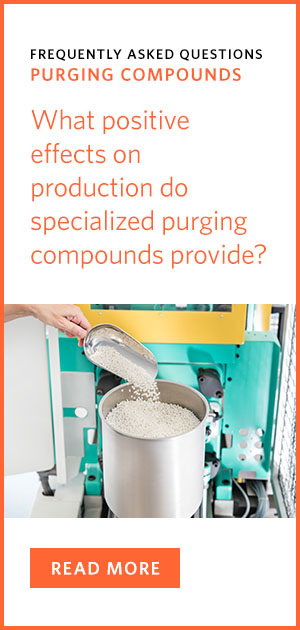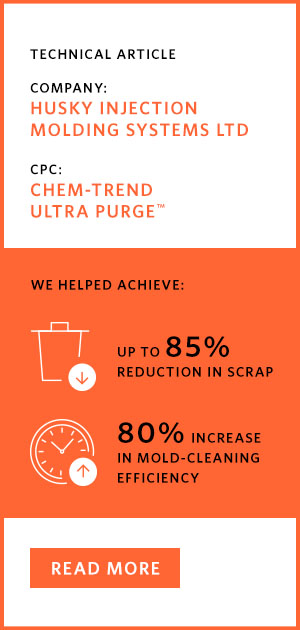The Power of Self-Emptying Technology for Extrusion Lines
Sponsored ContentAdvanced purging compounds can save you time, frustration, and cost.
Share

Thermoplastic extrusion line operators contend with a wide range of daily challenges. Color changes and contamination are two common and complicated obstacles to maintaining production schedules and producing high-quality end products that meet your customers’ needs. Issues like color streaking, black specks and other material changes can lead to excessive downtime, scrap, and wasted resources. The result? Unnecessary frustration and costs for you.
Why is this problem so rampant?
Complete cleaning is essential for maintaining effective and efficient extrusion production lines. Any material that remains after each run (and accumulates over time), from color pigments to additives, must be entirely removed from equipment, including screws, dies and metering pumps. Thorough purging of all contaminants helps keep lines performing optimally and consistently.
Is manual cleaning the answer?
Manual cleaning takes more time and labor than most producers can spare. Lines must be shut down to complete the task, which significantly cuts into both productivity and revenue. Intensely laborious, manual cleaning also poses safety risks to your teams. None of this is ideal.
Self-emptying technology can make a tremendous difference
Specialty purging compounds can alleviate many complications from the cleaning process and create exceptionally better output consistency. Advanced capabilities, like the self-emptying technology, can make a tremendous difference by facilitating the quick and complete removal of dark colors and carbon from parts. The self-emptying technology is also ideal for machine shutdowns. The equipment will be free of resin residue after using a self-emptying purge compound, resulting in no carbon specks contaminating parts on start-up.
One standout product that utilizes self-emptying technology is Chem-Trend Ultra Purge™ 3615. Especially effective at removing residue from the hard-to-reach dead spots, such as the back of the flights of the screw, that make the screw so difficult to clean completely. Ultra Purge™ 3615 works with such quickness and ease that the result is up to a 75% reduction in downtime and scrap for color changes, shutdowns/start-ups, and carbon removal.
Versatility makes the difference
The versatility of Ultra Purge™ 3615 is particularly attractive to producers. It’s ideal for a wide range of resins and works well for extrusion and blow molding machines with and without accumulators, which can be extremely difficult to purge. Ultra Purge™ 3615 is a chemical purging compound that typically requires less product to be effective and is less abrasive on equipment.
WATCH: Purging Compound Designed for Fast Residue Free Cleaning and Easy Screw Pulls
Ultra Purge™ 3615 in the real world
One Chem-Trend customer running a multilayer extrusion line recently saw great success by implementing Ultra Purge™ 3615 to purge recycled material. The line tested consisted of three extruders – one using virgin polyethylene and two using recycled polyethylene, which was leaving a lot of residue and various color contaminants inside the screw and die. Even subsequent manual cleaning wasn’t sufficiently finishing the job.
This was no surprise to Chem-Trend’s experts. Multilayer extrusion lines are well known to add complexity to the cleaning process. More layers mean more areas to clean, a larger combination of material properties to contend with, and more components that may be difficult to reach.
Using Ultra Purge™ 3615 was the solution. From the start of the first use, a large amount of color residue was extracted. After just five minutes, color particles were visibly extracted from the equipment, successfully completing the purge.
Ready to see what Ultra Purge™ 3615 can do for your extrusion line? Please visit Chem-Trend’s Purging Compound Solutions page to learn more and contact a purging compounds expert.

